Proposed Media Product: TV Advert for Rye lanez Tattoo Parlor
Target Audience: 20-35 years old
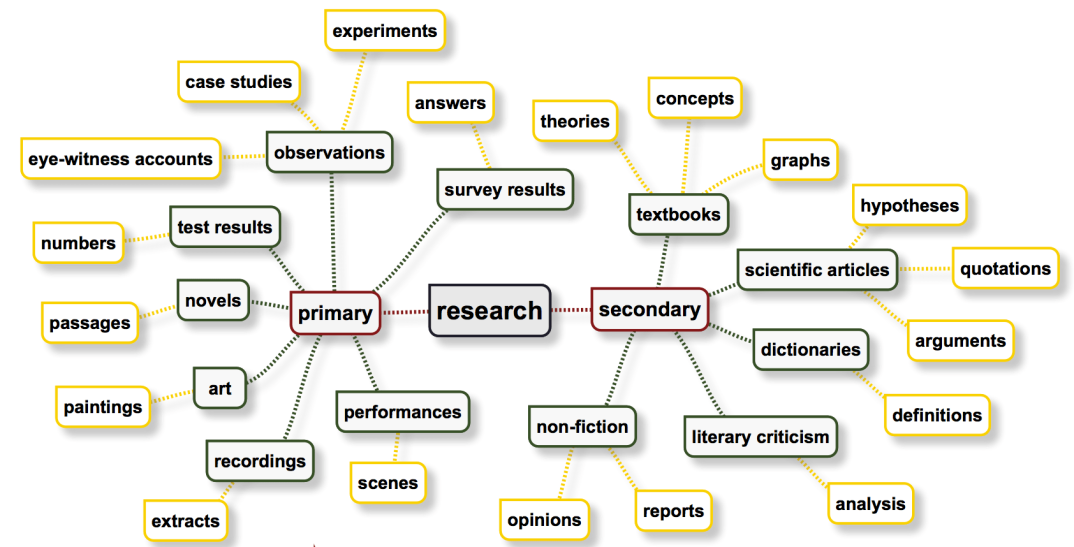
For my research commission, I plan to undertake both primary and secondary research in the three areas of design, market and production research for producing the advertisement that I’m creating as a part of a team.
This is going to be a tattoo advertisement for a Tattoo Parlour which applies permanent tattoos to customers. For a better understanding and for the final marketing of the production the client has asked my team to research into the background of the tattoo as an art as part of the preparation for the idea.
Below is a brief overview of all my design research, market research, and production research that I’ll go on to explain in greater detail later on.
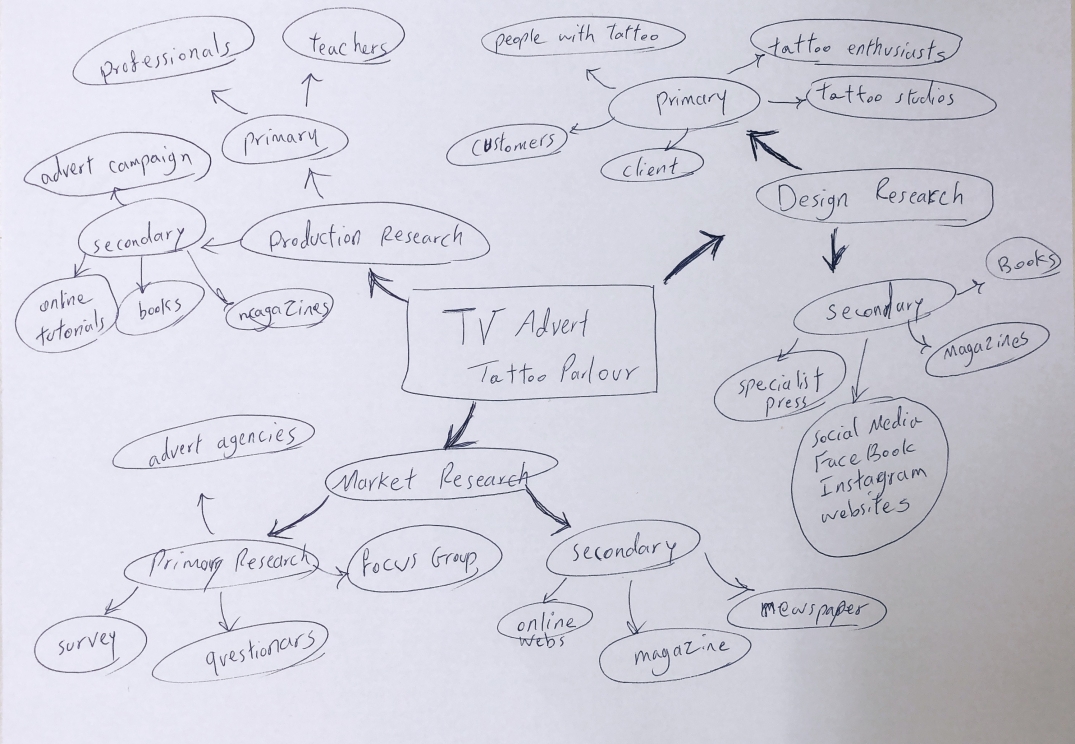
Before going to the research I would like to explore the definitions of Primary and Secondary Research.
Primary Research: “primary or Field Research is any kind of new data which has not been collected before including any observations, questionnaires, interviews with people one-to-one or in a focus group and conducting surveys.”
Secondary Research: “secondary or desk Research is collecting any kind of existing information and data to get to an analytic point of view.”
Design Research
Definition: “originally constituted as primary research, the process of designing work concerned with the context of designing and research-based design practice. Understanding and improving the processes are considered as design research.”
Primary Research
When we were planning the primary design research, we had a conversation with our teacher Katy about the plot and the storyline of the advert and how we were going to improve upon it. We discussed the pros and cons of making the advert in either drama or documentary style and ended up with producing our advert in the style of an animated and documentary to give the audience greater entertainment. We discussed how it should be devised, formed and shot.
For that purpose, we went to the tattoo parlour to have a look at the scene, the environment, lighting, and space so that we could arrange the equipment and props we would need for the shooting day.
We interviewed him about his occupation, inspiration, styles, methods and the equipment he uses as well as his background in tattooing, target audience and his future plans for expanding his business.
Secondary Research
Regarding secondary research, I started research first on the history of tattoo. Here is an example of an early photograph was taken by Watts and Skeen showing a Burmese youth having his tattoo applied in 1890s Burma (Myanmar). This photograph is now in the British Library.
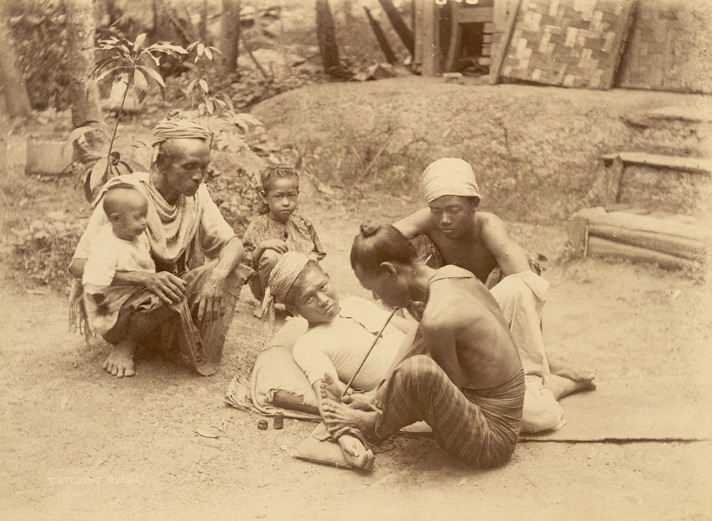 A Burmese youth having tattoo_ Burma, 1890s. (British Library)
A Burmese youth having tattoo_ Burma, 1890s. (British Library)
The history of tattooing goes back many centuries:
“It is also found amongst some of the ancient mummies found in China’s Taklamakan Desert c. 1200 B.C., although during the photographnasty (202 B.C.-A.D. 220), it seems that only criminals were tattooed. Japanese men began adorning their bodies with elaborate tattoos in the late A.D.’
Here are two interesting historical videos about the long history of the tattoo:
I had a look at a few tattoo websites such as an Indian tattoo campaign of Stop Not Chips, and Tattoo Jam which is a World Record Breaking Annual Tattoo Convention held every year to see the forms and styles of advertisements they have already had in social media, as well as information on tattoo enthusiasts and the variety of tattoo designs they are interested in, and the range of services that tattoo studios usually deliver to the customers. Then I checked the tattoo parlour’s website and the client’s pages on Instagram to have a look at the previous advertisements and his customers’ reviews and comments on the tattoo designs to get to a comparative point of view about our client’s website and its services. I reckoned that it would be beneficial for getting to some more inspired storylines and styles.
Below are some good examples of tattoos commercials that I found on YouTube. The first is an ad for the Indian tattoo campaign of Stop Not Chips and the second ad is for the Tattoo Jam Company. These are good examples of secondary design research that are relevant and focused and valid.
- https://youtu.be/S-DRleC4OcM
Market Research
The primary objective of advertising is to get the word out that you have something exciting to offer, says George Felton, author of “Advertising: Concept and Copy.”
Definition: “Market research is an organised effort to gather information about target markets or customers. It is a very important component of an strategy to market an advert.”
Primary Research
We had a meeting with the client in his workplace pitching the idea and explained how the advert was going to be produced.
Secondary Research
According to THEDRUM.COM website research, “while TV remains a central part of the mix, there’s no denying that digital ad spend is overtaking it at a great pace”, and eMarketer predicts that “by 2020 online ads will account for 60% of marketing budgets while TV will represent just 21.5% – a decline from the projected 25% slice anticipated. Although it’s clear digital will continue on its path to domination, the effectiveness of TV is still likely to be a hot topic.”
The figures below provide a guide to the average cost of a 30-second slot on each network.
| ‘Average cost Table’ | daytime slot | peak rate |
|
ITV |
£3,500 to £4,500 |
£10,000 £30,000 |
|
Channel 4 |
£1,000 to £2,00 |
£10,000 to £20,000 |
| Channel 5 |
£800 to £1,600 |
£2,500 to £4,500 |
|
Sky 1 |
£150 to £250 |
£650 to £1,150 |
| a Sports Channel |
£10 to £50 |
£60 to £750 |
| a Horror Channel | £50 to £150 |
£150 to £300 |
Since 1981, Broadcasters’ Audience Research Board (BARB) has been presenting the official viewing figures for UK television audiences by commissioning research companies such as Ipsos MORI, Kantar Media, and RSMB to collect data which represents the viewing behavior of the UK’s TV households. BARB data offers broadcasters and advertisers a minute-by-minute breakdown of viewing at regional and national levels. This information is vital for assessing how programmes, channels or advertising campaigns have performed and provides the basis for airtime advertising trading.
BARB reports viewing to commercials, known as commercial impacts, in the same way, that we report viewing to programming. These data are relied upon by advertisers and agencies looking to assess the return on investment of their advertising campaigns.
BARB was the first television industry currency in the world to deliver a measurement of dynamically served advertising; They have been delivering a solution for Sky Ad Smart since 2013. Their measurement system gives all BARB customers the ability to see the extent to which commercial impacts have moved into this new commercial format. “For example, its data show that Sky AdSmart impacts increased by 92% year-on-year, based on all individuals for the calendar month of January in 2017 and 2018. In January 2018, Sky AdSmart ads accounted for 1.15% of all impacts sold by Sky.”
Below is a chart by the website thinkbox.com which demonstrates classifications for the UK TV audience to further target the audience and view their TV habits.

Legal and Regulatory Requirements
ASA
The Advertising Standards Authority (ASA) is the UK’s independent advertising regulator. The ASA makes sure ads across UK media stick to the advertising rules (the Advertising Codes).
Below are a couple of rules:
- Advertisements must not be harmful or offensive. Advertisements must take account of generally accepted standards to minimise the risk of causing harm or serious or widespread offence. The context in which an advertisement is likely to be broadcast must be taken into account to avoid unsuitable scheduling.
- Advertisements must contain nothing that could cause physical, mental, moral or social harm to persons under the age of 18.
- Children must be protected from advertisements that could cause physical, mental or moral harm.
- Television only – With limited exceptions, living persons must not be featured, caricatured or referred to in advertisements without their permission.
- Advertising that contravenes the prohibition on political advertising set out below must not be included in television or radio services:
Ofcom
Ofcom is the communications regulator in the UK. It regulate the TV, radio and video-on-demand sectors, fixed-line telecoms (phones), mobiles and postal services, plus the airwaves over which wireless devices operate. It operate under a number of Acts of Parliament, including in particular the Communications Act. “It shall be the principal duty of Ofcom, in carrying out their functions; (a) to further the interests of citizens in relation to communications matters; and(b) to further the interests of consumers in relevant markets, where appropriate by promoting competition”
- the UK has a wide range of electronic communications services, including high-speed services such as broadband
- people who watch television and listen to the radio are protected from harmful or offensive material
Production Research
Definition: “Production Research is the process of finding the elements which make up a production – primarily information and contributors, but also additional material like archive footage, sound and still pictures.”
When we went to the tattoo parlour to assess the interior and exterior of the studio, we took some pictures for the production purposes.
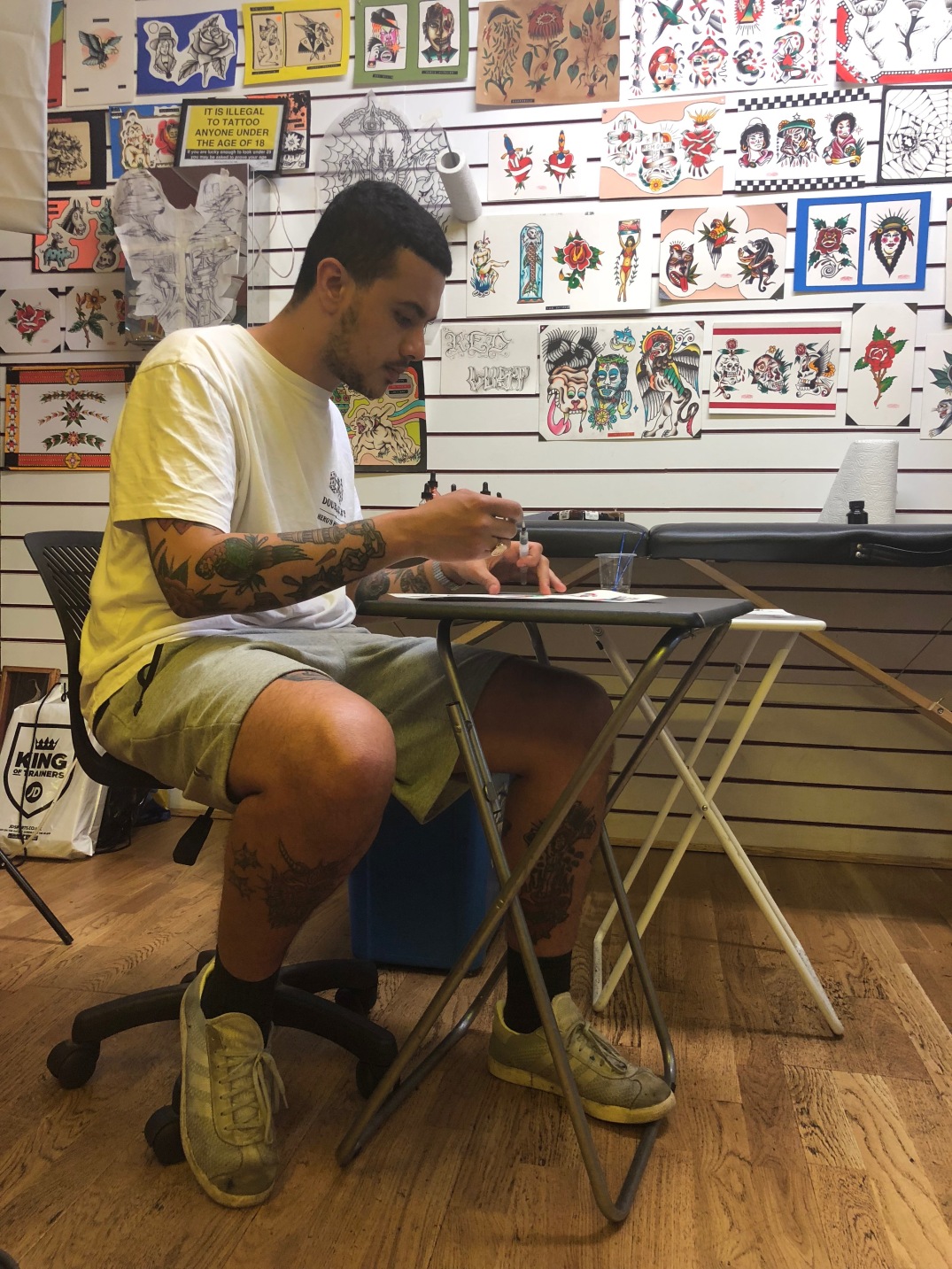
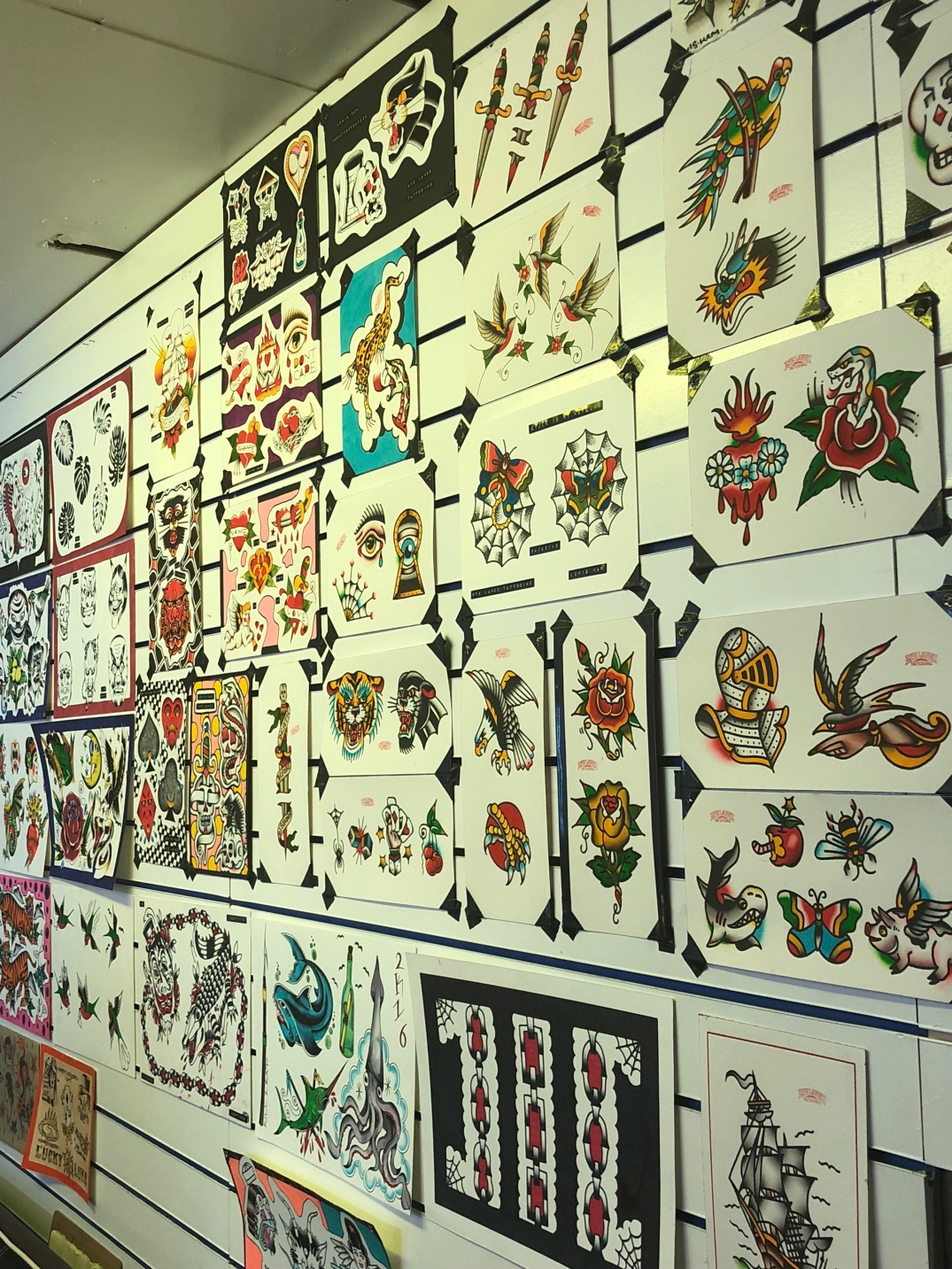
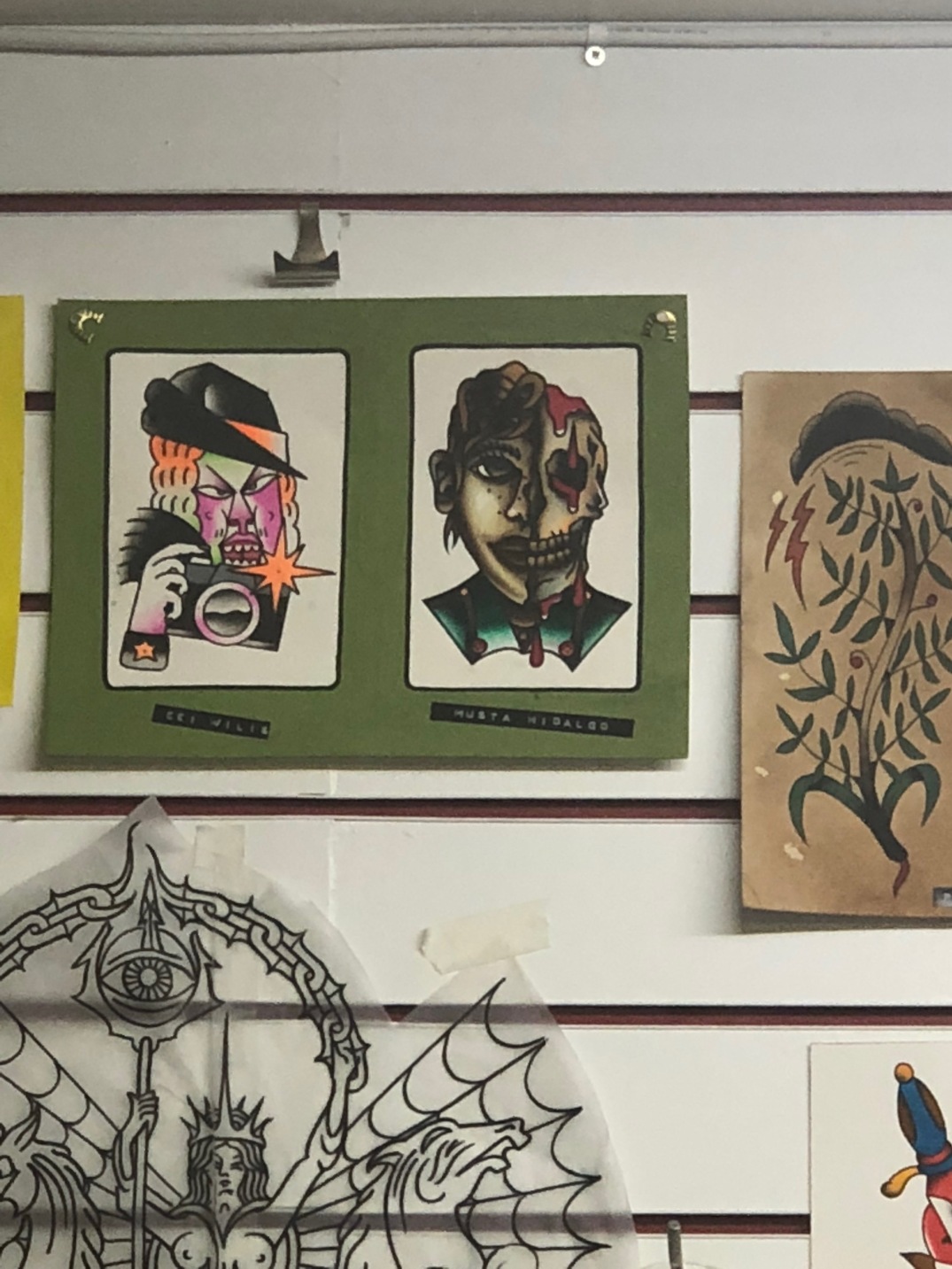
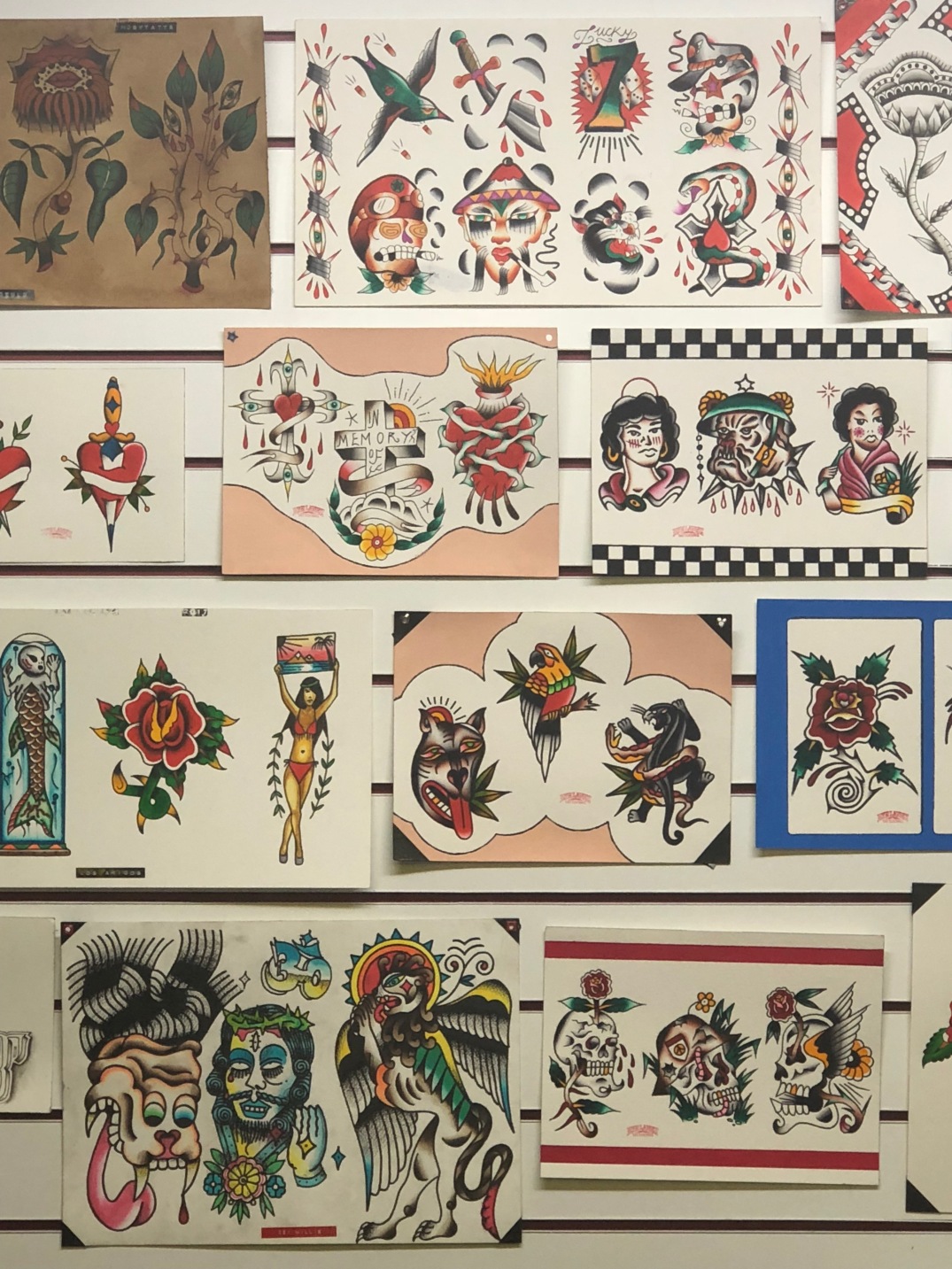
Storyboard
After we agreed on the plot of the story we draw the storyboard of the Advert production which shows how it’s going to look like. The first part will be the animated Logo of the Tattoo Parlour, and it will continue by telling the story of the character who wants to get a tattoo.
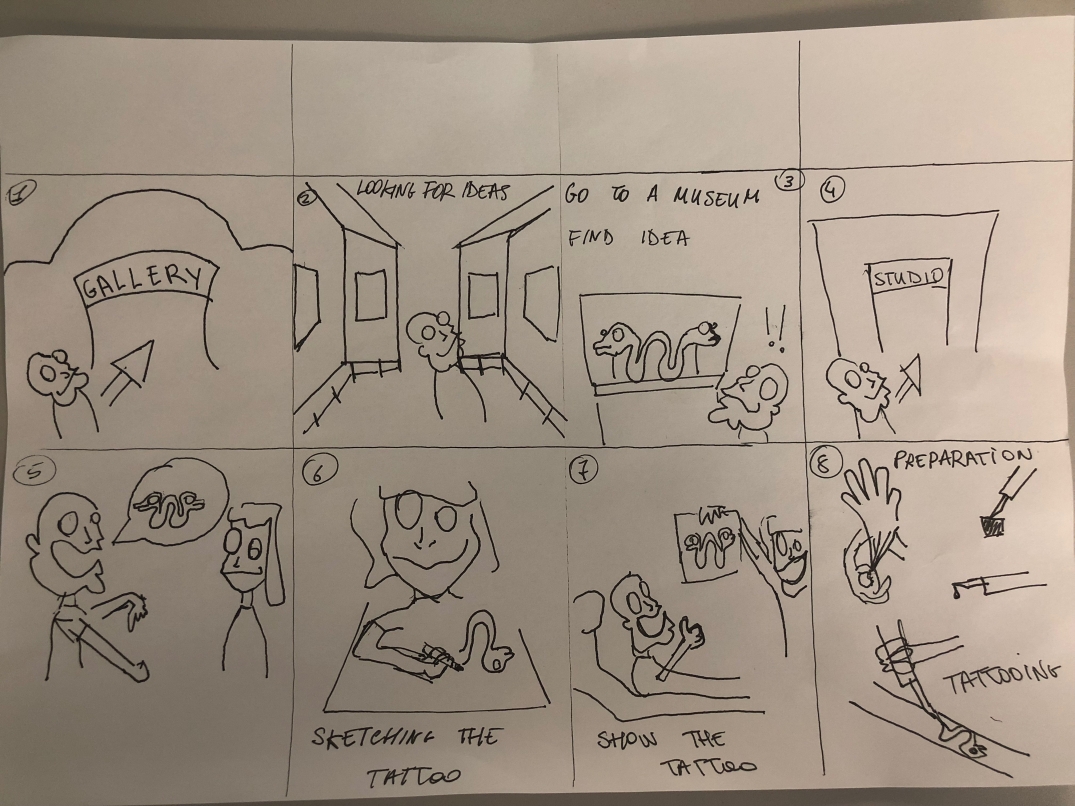
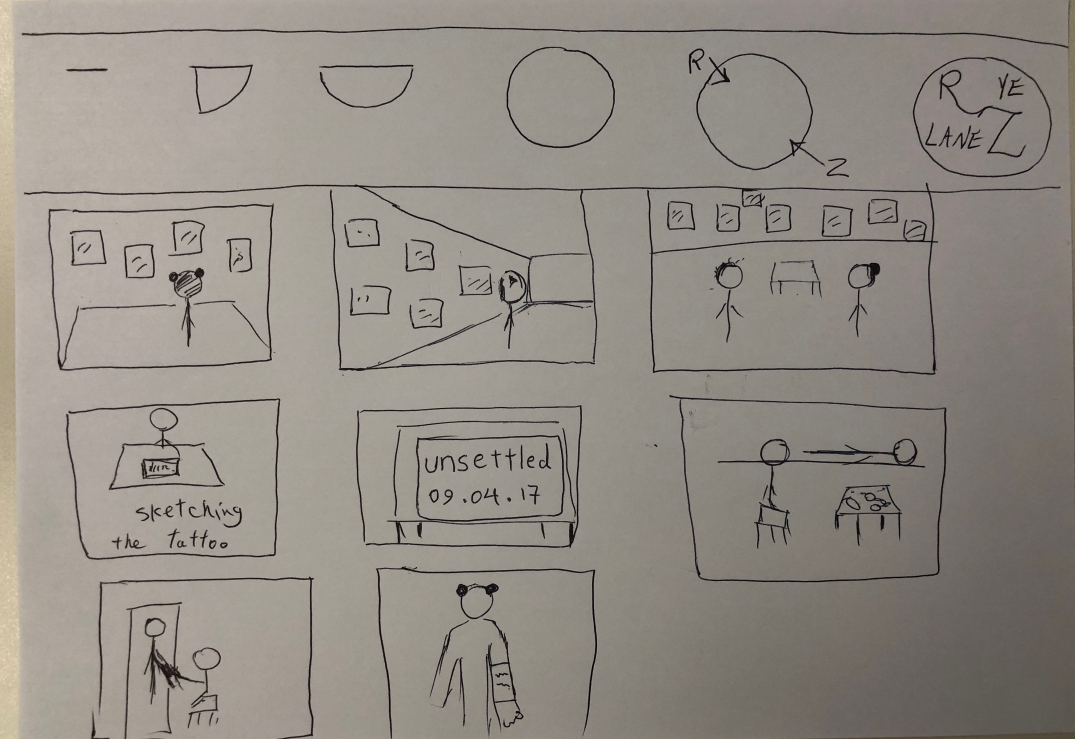
Here is production table of the scenes and shots of the first idea we were going to produce.
| Scene | Shot | Action |
| 1 | 1 | WS Igor walks to the British Museum |
| 1 | 2 | WS Igor enters to the British Museum |
| 2 | 1 | WS Igor looking at a picture(Rack focus to Igor) |
| 2 | 2 | CU of the picture |
| 2 | 3 | Igor sees the picture and gets the Idea |
| 3 | 1 | CU of some designs in the tattoo parlour |
| 3 | 2 | MS Igor shows the design to the tattoo lady |
| 3 | 3 | CU Igor’s face |
| 3 | 4 | CU tattoo lady’s face |
| 4 | 1 | Tattoo lady drawing |
| 4 | 2 | CU of the drawing design |
| 5 | 1 | WS Igor on the couchTattoo lady shows the design |
| 5 | 2 | CU the design |
| 5 | 3 | CU Igor agrees/ is happy |
| 5 | 4 | CU tattoo lady putting up the gloves |
| 5 | 5 | CU ink |
| 5 | 6 | CU tattoo lady begins on Igor’s hand |
| 6 | 1 | CU Igor’s face |
| 6 | 2 | WS Igor and tattoo lady |
| 6 | 3 | |
Planning the time for production and post-production process
It will require 1 day for interviewing the client in his workplace. We will film for another 2 days for pitching the idea and for shooting the production. Also, we will take three to five days for the editing and post-production process.
Location & Equipment
We arranged a time with the tattoo artist to head to the Rye LaneZ tattoo parlor located at Shop 32, 48 Rye Ln, Peckham, London for shooting. We did the shooting in three days. We used a tripod and two cameras for close-up and wide shots, also we took a few pictures of the parlor with either the Canon Camera or iPhone.
Setting Up/ Set Construction
We visited the interior and exterior area of the tattoo parlour to manage the setting we needed for the shooting day. We decided that we needed one tripod, two or three cameras.
Costs
I estimated the cost for production process which would be £30 for travel tickets for three or four days.
REFRENCES:
- Bryant A & Mawer Ch, (2016). ‘The TV Brand Builders’. Koganpage.
- Abercrombie N. & Longhurts B. (1998). ‘audiences’ SAGE Publications Ltd.
- Weerakkody N. (2009). ‘Research Methods for Media and Communication’, Oxford.
- Barry P, (2016). ‘The Advertising Concept Book’, Thames & Hudson.
- History of Tattooing, Available at: https://en.wikipedia.org/wiki/History_of_tattooing
- Tattoos, Available at: https://www.smithsonianmag.com/history/tattoos-144038580/
- The Drums, ‘How much does it cost to advertise on UK TV?...’. Available at: http://www.thedrum.com/news/2017/02/22/how-much-does-it-cost-advertise-uk-tv-heres-what-channel-4-itv-and-more-charge-slots
- BARB, Available at: http://www.barb.co.uk/
- Thinkbox.tv, Available at: https://www.thinkbox.tv/
- Gayomali Ch, ‘Meet Roxx, the Woman at the Forefront of the Ink World’s Coolest Artistic Movement’. Available at: https://www.gq.com/story/roxx-tattoo-artist-interview
- ‘Elements of Cinema | A Student’s Guide to the Fundamentals of Filmmaking’. Available at: http://www.elementsofcinema.com/index.html